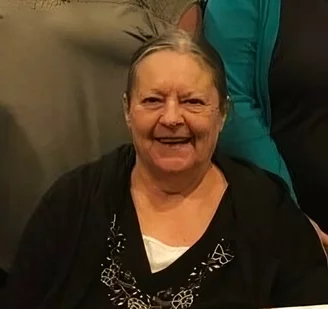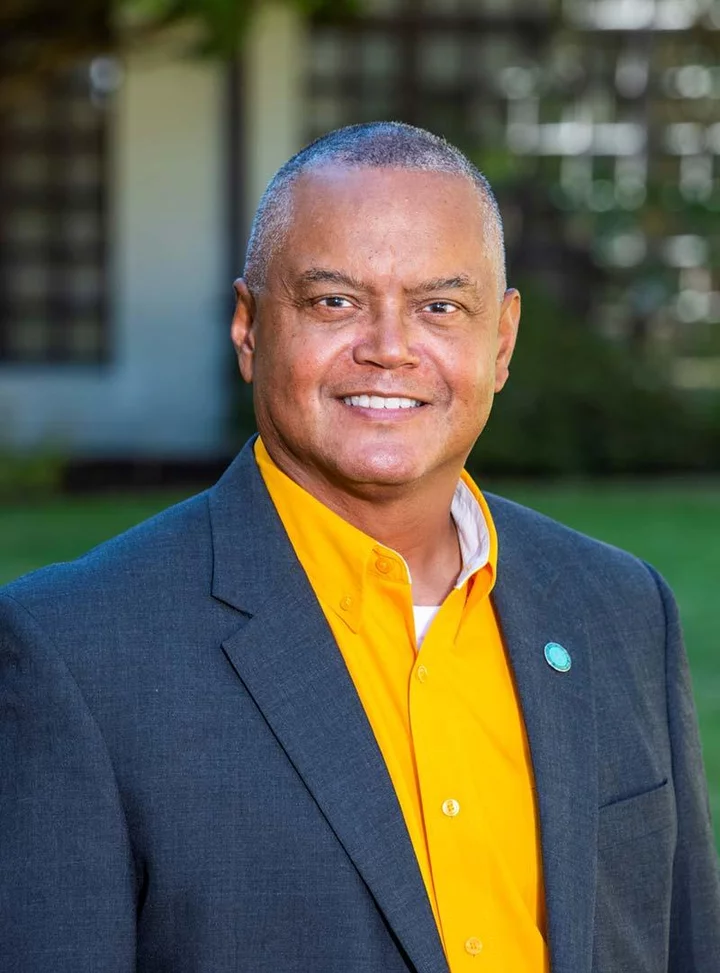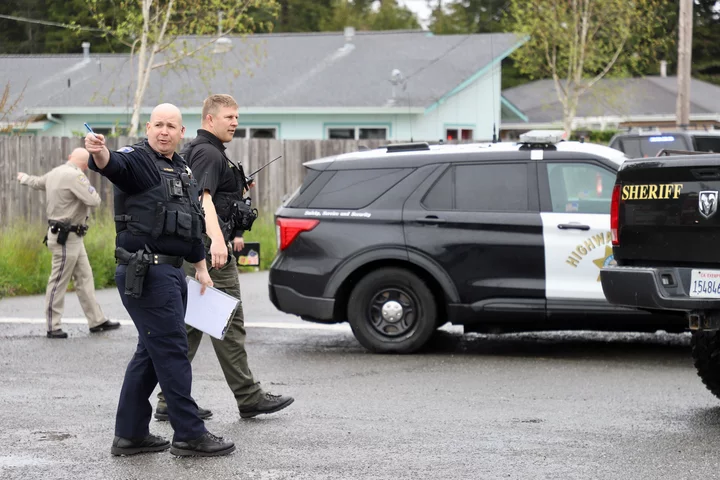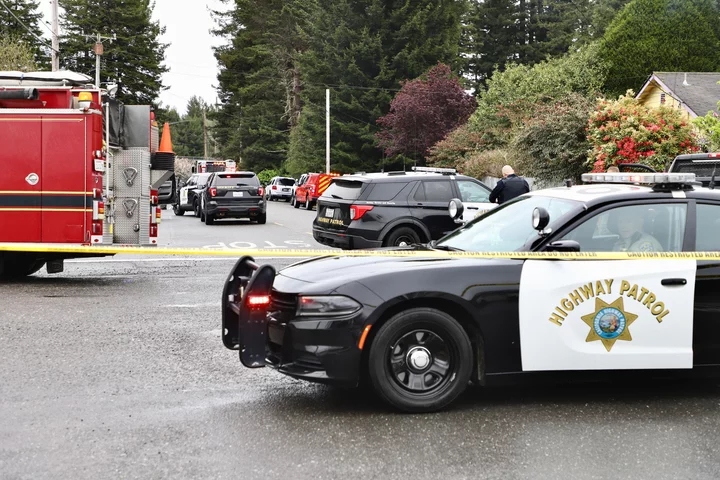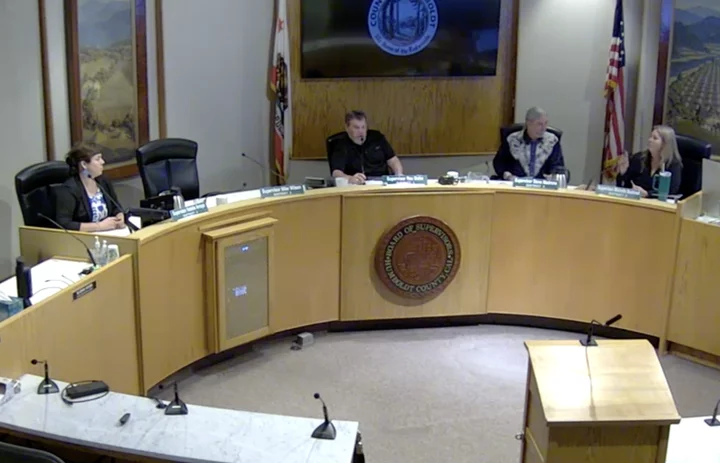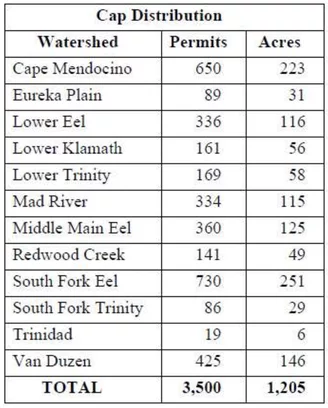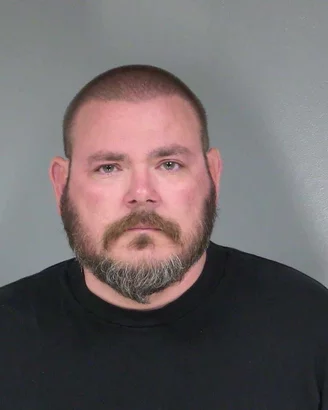OBITUARY: Bonnie Jean Fyle, 1950-2024
LoCO Staff / Friday, April 26, 2024 @ 6:56 a.m. / Obits
On April 17, 2024, our beloved mother, grandmother and sister, Bonnie Jean Fyle, sadly passed away due to stage 4 COPD.
Bonnie was born on Sept. 26, 1950 in Duluth, Minn. to Geraldine and Wallace Walgren. She attended Hermantown High School in Duluth and after spending the majority of her younger years in this town, she decided to begin a new journey and moved to California with her two children, Kelly and Bryon Fyle. In 1980, little Kimberlee Fyle was born. Bonnie truly loved and admired her mother Geri Jones, and always felt she needed to be close to her. After spending nearly a decade in the Bay Area, she relocated to the small town of Mad River (population of 35, at the time). Away from the chaotic urban lifestyle, to an area surrounded by the beauty and serenity of nature, is where she decided to raise her three children.
Anyone who knew Bonnie knew she believed in God and that she was a lifetime Minnesota Vikings fan. Some would say she was the 12th player for this team! Furthermore, she was also blessed enough to live through the many eras of music and witnessed its evolution, enjoying the sounds of great artists such as The Eagles, Fleetwood Mac, Lynyrd Skynyrd and many more great albums. She enjoyed all novels and movies created by Stephen King. She also enjoyed playing Yahtzee and watching game shows. Bonnie was a funny, beautiful woman with a heart of gold. The things she didn’t like: The Green Bay Packers and frogs.
Bonnie Jean Fyle is survived by her three children: Kelly Heiser, Bryon Fyle and Kimberlee Fyle, along with her grandchildren Cody Turner, Alexis Heiser, Trinity Fyle as well as her two great-grandkids, Ariana and Lincoln Turner. In addition, she is survived by her siblings: Wally Walgren, Steve Walgren, Wana Jones, Donna Jones and Joe Jones. She will be missed.
Join us for her celebration of life ceremony on Saturday, June 8, 2024 at 1 p.m. at the Mad River Burger Bar.
###
The obituary above was submitted on behalf of Bonnie Fyle’s loved ones. The Lost Coast Outpost runs obituaries of Humboldt County residents at no charge. See guidelines here.
BOOKED
Yesterday: 8 felonies, 17 misdemeanors, 0 infractions
JUDGED
Humboldt County Superior Court Calendar: Today
CHP REPORTS
1500 Ashford Rd (HM office): Traffic Hazard
1270 Hoiland Rd (HM office): Traffic Hazard
Wilder Ridge Rd / Mattole Rd (HM office): Traffic Hazard
Hookton Rd / Eel River Dr (HM office): Roadway Flooding
1656 Union St (HM office): Closure of a Road
ELSEWHERE
RHBB: Arcata Gives Steel Waterline Replacement Project Update
Smithsonian Magazine: Denmark’s Postal Service Is About to Stop Delivering Physical Letters After 400 Years
(VIDEO) DAY FOUR: Occupy Cal Poly Humboldt Protester Details Group’s Demands, Motivations and Views on President Tom Jackson, Law Enforcement and Their Campus Impact
Andrew Goff / Thursday, April 25, 2024 @ 5 p.m. / Activism , Cal Poly Humboldt
A light drizzle dampened protesters’ tents, signs and chalk messages as the Occupy Cal Poly Humboldt demonstration entered its fourth day. The campus remains officially closed and will be so through the weekend as pro-Palestinian protesters continue their sit-in of Siemens Hall and public spaces around its perimeter.
The Outpost returned to CPH’s campus Thursday and, for the first time since the start of the protest, we were granted an on-camera interview with one of the involved students. In the clip above, occupier Jackie discusses the state of the demonstration, the CPH administration’s accusations of theft and vandalism, and the occupation’s impacts on other students (among other topics).
PREVIOUSLY:
- Cal Poly Humboldt Faculty Pass Vote of No Confidence in President Tom Jackson Amid Ongoing Student Protest
- DAY THREE: (PHOTOS) Student Protesters List Demands, Expand Graffiti Messaging and Voice Camaraderie on Third Day of Cal Poly Humboldt Campus Occupation
- Cal Poly Humboldt Says Campus Will be Closed Through at Least the Weekend Due to Ongoing Pro-Palestine Protests
- DAY TWO: The Morning After Cops Clash With Student Protesters, CPH Campus is Closed, Occupied Building Barricaded
- Legendary Rebellious Rapper Chuck D’s Cal Poly Humboldt Event Canceled By In-Progress, On-Campus Rebellion
- DAY ONE: Major Pro-Palestine Protests at Cal Poly Humboldt Provoke Massive Police Response; Protesters Occupy Siemens Hall; Reports of Violent Force Between Activists and Law Enforcement
Sheriff’s Office Issues Statement on Today’s Shootings in Cutten
LoCO Staff / Thursday, April 25, 2024 @ 4:09 p.m. / Crime
PREVIOUSLY:
###
Press release from the Humboldt County Sheriff’s Office:
On April 25, 2024, at approximately 10:31 a.m., the Sheriff’s Office Emergency Communications Center received a 911 call reporting a person had been shot in the 2400 block of Fern Street, Eureka. Deputies were immediately dispatched to the area. While deputies were enroute, it was learned that a White Male Adult walked up to a 75-year-old woman who was standing in front of her garage with her sister and shot at her multiple times. The woman was struck by gunfire, and the suspect fled on foot westbound on Fern toward Walnut Avenue.
Deputies arrived on the scene at approximately 10:38 a.m. and saw a subject matching the description of the suspect walking on Fern. Two deputies exited the patrol vehicle and contacted the suspect at gunpoint. The suspect refused commands and fled into a residence across the street from the location where the victim was shot. An additional deputy arrived on the scene, and the three deputies surrounded the residence while additional units responded to the scene. At approximately 10:40 a.m., the suspect exited the residence and walked toward the deputies’ location, pointing a firearm in the direction of the deputies. The suspect refused commands, and one deputy shot the suspect. The suspect dropped the firearm and fell to the ground. Deputies secured the suspect in handcuffs, and emergency medical assistance was called to the scene. A hasty search was conducted inside the residence to ensure there were no other victims or suspects inside. The deputies then rendered medical aid to the suspect by packing his wounds and performing CPR. Paramedics arrived on the scene and took over the medical care of the suspect and the 75-year-old female victim. Both were subsequently transported to an area hospital where they are receiving treatment for their injuries.
The County Critical Incident Response Team (CIRT) protocol was implemented to investigate the shooting. The Humboldt County District Attorney and the Humboldt County Sheriff’s Office are leading the investigation with other county law enforcement investigators. After CIRT investigators collect all the evidence and conduct all the interviews, more information will be release regarding this incident.
This case is still under investigation.
Anyone with information about this case or related criminal activity is encouraged to call the Humboldt County Sheriff’s Office at (707) 445-7251 or the Sheriff’s Office Crime Tip line at (707) 268-2539.
BREAKING: Cal Poly Humboldt Faculty Pass Vote of No Confidence in President Tom Jackson Amid Ongoing Student Protest
Ryan Burns / Thursday, April 25, 2024 @ 4:08 p.m. / Cal Poly Humboldt
Cal Poly Humboldt President Tom Jackson.
###
On the heels of a request from the Cal Poly Humboldt chapter of the California Faculty Association, the University Senate general faculty this afternoon passed a vote of “no confidence” in President Tom Jackson and his chief of staff, Mark Johnson, in a resolution that demands their immediate resignation.
The vote comes on the fourth day of a student-led protest and occupation of Siemens Hall — along with one or two other buildings, according to campus administrators, though the activists insist that their occupation is limited to the single academic and administrative building.
The demonstration led to a violent confrontation Monday night between students and officers from multiple law enforcement agencies. The campus was subsequently closed and will remain closed at least through the weekend, according to administrators.
As with demonstrations on college campuses across the country, the students and their supporters at Cal Poly Humboldt are protesting the State of Israel’s actions since the October 7 terrorist attack by Hamas-led Palestinian militant groups. They’re calling for an immediate ceasefire and for Palestinian freedom, and the local protesters have issued a list of demands that includes cutting all university ties with Israel.
President Jackson has been notably absent from public view during these events. However, according to Maureen Loughran, field representative for the CFA union’s Humboldt chapter, today’s University Senate faculty vote was about more than Jackson’s actions — or inaction — this week.
“The president’s been pretty MIA for all kinds of issues, and he has been saying things that didn’t seem welcoming and supportive of students in general,” Loughran said. “We felt that he hasn’t been doing his job, so let’s get rid of him.”
Loughran said that the vote of no confidence was not unanimous but “overwhelmingly in support of the resolution,” with more than 180 votes tallied.
[UPDATE: A member of the faculty told the Outpost via email at 5:14 p.m. that the final vote tally, with 200 eligible voters, was 170 “yes” votes, three “no” votes and seven abstentions.]
Official statements from the university have said that protesters have broken numerous laws, including resisting arrest, destroying and damaging property, criminal trespass and more.
The Los Angeles Times on Thursday reported that university officials condemned “hateful graffiti” that has proliferated across campus, including at least two areas that have been “tagged with language that is harmful to the Jewish community.” Administrators estimate damage to the campus to be “in the millions,” according to the paper.
Here’s the text of the resolution passed this afternoon:
CAL POLY HUMBOLDT
General Faculty
Sense of the Faculty Resolution on
A Vote of No Confidence In President Tom Jackson25-23/24-EX — April 25, 2024
WHEREAS, On April 22, 2024 students protesting the ongoing war and tragic loss of life of Palestinians in the Gaza Strip entered Siemens Hall; and
WHEREAS, Shortly after students occupied Siemens Hall, the university called on multiple law enforcement agencies to respond, which included dozens of armed, non-university police officers arriving at Siemens Hall wearing body armor and carrying shields; and
WHEREAS, Such a swift and disproportionate police response created unnecessary escalation resulting in physical assault on students and faculty and injury of law enforcement personnel; and
WHEREAS, President Tom Jackson and Chief of Staff Mark Johnson, through their unfamiliarity with the Cal Poly student body mishandled the protest by calling those law enforcement agencies to attempt to extract protestors from Siemens Hall, which led to the injury of students and faculty of Cal Poly Humboldt; and
WHEREAS, It is the responsibility of all members of Cal Poly Humboldt campus community to ensure the safety of our students, now, therefore, be it
RESOLVED, That the General Faculty of Cal Poly Humboldt have no confidence in the leadership of President Tom Jackson and his Chief of Staff Mark Johnson; and be it further
RESOLVED, That the General Faculty demand Cal Poly Humboldt not pursue disciplinary action or legal prosecution against any students for actions taken in connection with the protest and occupation of Siemens Hall; and be it further
RESOLVED, That the Faculty and University provide all necessary and reasonable accommodations to ensure that every student has the opportunity to successfully complete their coursework and fulfill their academic requirements for the semester; and be it further
RESOLVED, That the General Faculty demand that Cal Poly Humboldt guarantee full compensation for all student employees irrespective of their ability to perform their usual duties; and be it further
RESOLVED, In keeping with our desire to maintain a campus that is safe for our students and return to the work of educating those students, that the General Faculty of Cal Poly Humboldt demand the immediate resignation of President Tom Jackson and Chief of Staff Mark Johnson; and be it further
RESOLVED, That this resolution be distributed to:
The Office of the Chancellor of California State University
The Academic Senate of California State University
Governor Gavin Newsom, State of California
Senator Mike McGuire, President Pro Tempore of the California Senate
Representative Jared Huffman, US House of Representatives
###
PREVIOUSLY:
- DAY THREE: (PHOTOS) Student Protesters List Demands, Expand Graffiti Messaging and Voice Camaraderie on Third Day of Cal Poly Humboldt Campus Occupation
- Cal Poly Humboldt Says Campus Will be Closed Through at Least the Weekend Due to Ongoing Pro-Palestine Protests
- DAY TWO: The Morning After Cops Clash With Student Protesters, CPH Campus is Closed, Occupied Building Barricaded
- Legendary Rebellious Rapper Chuck D’s Cal Poly Humboldt Event Canceled By In-Progress, On-Campus Rebellion
- DAY ONE: Major Pro-Palestine Protests at Cal Poly Humboldt Provoke Massive Police Response; Protesters Occupy Siemens Hall; Reports of Violent Force Between Activists and Law Enforcement
(UPDATING) Deputies Shoot Man Believed to Have Shot Elderly Woman in Cutten This Morning; Fern and Cedar Streets Closed
Hank Sims / Thursday, April 25, 2024 @ 11:15 a.m. / Emergencies
UPDATE, 11:50 a.m.: Speaking to media at the scene — see the video above — Sheriff Billy Honsal confirms that the second gunshot victim, the suspect in the original shooting, was shot by deputies.
Honsal said that the suspect was located shortly after law enforcement arrived to respond to the initial 911 call. When deputies contacted the suspect he ran into a house and, Honsal said, came out bearing a firearm, at which point the officers fired on him.
The man is in critical condition, Honsal said. The elderly woman whom he is believed to have shot is in serious but stable condition.
The county’s Critical Incident Response Team will be leading the investigation of the incident.
###
Cutten’s Cedar and Fern streets are closed at the moment, following two connected shootings this morning. There is a heavy police presence at the scene.
According to scanner traffic and witnesses at the scene, a younger man shot an elderly lady near that intersection. Police arrived and located the suspect, who seems to have fled into home. Additional shots were heard, and the suspect himself was down.
At this moment it’s not clear how the original suspect came to be shot. We also have no word on the condition of either of the people. Two ambulances were seen leaving the scene.
Avoid the area. We’ll be updating as we get more information.
Photos/video: Andrew Goff.
Supervisors Receive Report on the Declining Cannabis Industry and its Watershed Impacts, Then Vote to Shut Down a Nuisance Farm
Isabella Vanderheiden / Thursday, April 25, 2024 @ 7:15 a.m. / Cannabis , Local Government
Screenshot of Tuesday’s Humboldt County Board of Supervisors meeting.
###
At Tuesday’s meeting, the Humboldt County Board of Supervisors received an update on the status of the county’s commercial cannabis permitting program and ongoing efforts to monitor the industry’s impact on local watersheds.
To no one’s surprise, the county has seen “an overall decline in the number of properties that are being cultivated” in recent years, said Planning and Building Director John Ford. To date, the county has received 2,125 cultivation applications, about half of which – 1,068 – have been approved and are being monitored by staff. Of the remaining 1,057 permit applications, 400 are still being processed and 657 have been denied.
Ford noted that the number of active cultivation permits is still well below the 3,500 cap imposed by Resolution 18-43, which was adopted by the Board of Supervisors in 2018 as a part of the county’s Commercial Cannabis Land Use Ordinance, also known as Ordinance 2.0. The resolution established a permit cap for each of the county’s primary watersheds and certain sub-watersheds to prevent adverse impacts to water quality and fisheries.
When the resolution was adopted, the county was expecting an onslaught of new permit applications, Ford said. “At the time, there was concern that we would see a repeat of [Ordinance] 1.0 when over 2,000 applications were submitted [to the county] in 2016,” he said. “[Staff] wanted to make sure that there was an understanding that this wasn’t just going to continue to expand at that rate.”
However, the opposite happened. In the years following legalization, the price of cannabis plummeted due to massive overproduction across the state, pushing hundreds of local farmers into debt and forcing many others to call it quits.
“We’re not seeing new applications come in,” Ford said. “I think there may have been five [new applications submitted] in the last two years. … We believe that there isn’t anything that’s pressing or anything that needs to be done right now to address the [current] circumstances.”
Ford acknowledged some of the concerns brought forth by the proponents of Measure A, also known as the Humboldt Cannabis Reform Initiative, which sought to restrict commercial cannabis cultivation through a host of strict rules. The ballot measure was rejected in a landslide vote.
“There were some comments that were made [regarding] the possibility of an [Ordinance] 3.0 … in terms of reducing the [permit] cap,” Ford said, adding that the board could refrain from any action on the item. “[I] just wanted to bring that up. Not that we’re looking to do that, but just in case the board is looking to pursue those [options].”
During public comment, more than a dozen local cannabis farmers urged the board to refrain from further action. Craig Johnson, owner of Alpenglow Farms, emphasized that most local farmers are “not thinking about future expansion.”
“We’re just trying to hold the baseline,” he said. “We’re being singled out. … If you’re going to have any of these types of requirements, remove ‘cannabis’ from the document and just make it a county-wide document. If you’re talking culverts, talk about culverts from the bay up into the mountains, every county road, but don’t talk about mine because mine are done.”
Ross Gordon, policy director for the Humboldt County Growers Alliance, credited Ford for providing an accurate picture of the state of the local cannabis industry but echoed the previous speaker’s request for equitable treatment.
“If we’re talking about assessing environmental impacts associated with cannabis, we should also assess [the] environmental impacts of all activities within the county, whether it’s land use activities, residential activities, industrial, commercial [or] agricultural,” he said. “It has been frustrating at times to be here and have continued conversations only about licensed cannabis cultivation when we know that there are a variety of things affecting our environment and all of those things need to be considered collectively.”
Scott Bauer, a senior environmental scientist with the California Department of Fish and Wildlife, advocated for increased monitoring of local watersheds but acknowledged that the proliferation of new cannabis farms wasn’t really a present issue.
“I’ll be the first to admit it – I think the agencies and the county [hasn’t] done enough of that,” he said. “What I mean is looking at localized impacts. Let’s say Larabee Valley, which is filled with wells, right? We’re concerned about summer steelhead downstream and there are only about 100 left in the Van Duzen River. How are those wells drawing on those flows that … provide that cold water for steelhead? We should try and figure out those issues.”
Supervisor Michelle Bushnell said it was unfortunate that cannabis farmers felt singled out because “every industry is struggling in Humboldt County.”
“This conversation coming up again, targeting cultivation permitting again, it feels very attackative – if that’s the right word – to the cultivation community,” she said. “I hope that we maybe can do the monitoring that’s required and put this at rest for once and all and move forward. And hopefully, our cultivators that are remaining can be successful, because when they’re successful our county is successful and our community is successful.”
Bushnell noted that the number of farmers could drop off significantly in the next year if folks aren’t able to pay back Measure S taxes by March of 2025. “We have a lot of payment plans that are going on with Measure S,” she said. “If they don’t complete those [payments] then that’s going to be a revocation of their permit.”
After a bit of additional discussion among board members, Bushnell made a motion to receive and file the report and asked Ford to bring back more information in a year. The action was seconded by Supervisor Arroyo and approved in a 4-0 vote, with Supervisor Mike Wilson absent.
###
Other notable bits from Tuesday’s meeting:
- The board unanimously voted to revoke a conditional use permit for Hwy 36 Farms, LLC, a “nuisance” cannabis farm near Bridgeville that has been out of compliance with county and state rules for the last two years. During a site inspection in April 2022, county staff found litter throughout the property, cultivation occurring in unpermitted areas, and water use from an unknown source. The permit holder did not respond to the allegations during the public hearing.
- The board also approved a Memorandum of Understanding (MOU) between the Humboldt County Economic Development Department and partner agencies for the new WindLINK program. The program is a partnership between the county, Redwood Region Economic Development Commission (RREDC), Redwood Coast Chamber Foundation, Greater Eureka Chamber of Commerce, Northern California Small Business Development Center and NorCal APEX Accelerator. The new partnership aims to bolster economic development in the county, as it relates to the emerging offshore wind industry.
Former Sheriff’s Office Lieutenant Sentenced to 90 Days for Criminal Threats, District Attorney’s Office Says
LoCO Staff / Thursday, April 25, 2024 @ 7:01 a.m. / Crime
PREVIOUSLY:
###
Press release from the District Attorney’s Office:
On March 29, 2024, a Humboldt County jury convicted 47 years-old Samuel Williams of felonious criminal threats and brandishing a firearm. During early morning hours of March 24, 2023, Williams made an unannounced entry into the McKinleyville home of his estranged wife wherein she and her male friend were located. Without provocation, Williams threatened to kill the friend and pointed his firearm at the unarmed man causing him to fear for his life.
Yesterday, during the sentencing hearing the Honorable Judge Timothy Canning placed Williams on formal supervised probation for a period of 2 years and ordered Williams to serve 90 days in jail for his crimes.
The case was prosecuted by DDA Candace Myers with assistance from DA Investigator Steve Dunn. Williams was represented by local attorney David Celli.
District Attorney Stacey Eads extends her gratitude to the jurors for their time and service.

